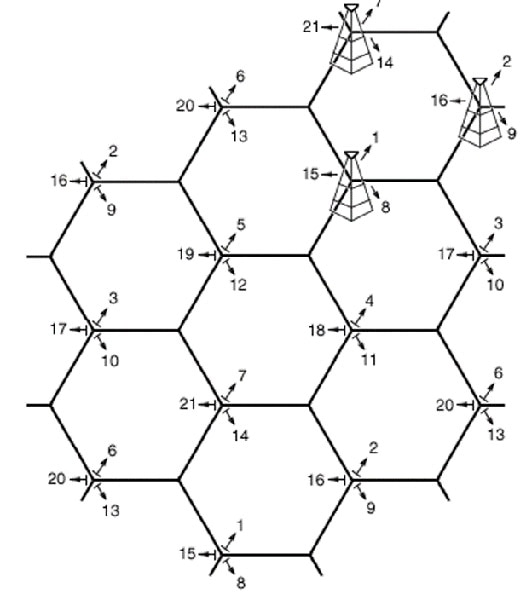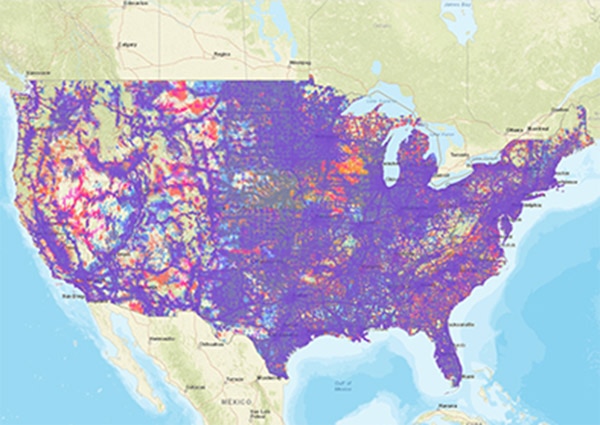Cell Carriers: How the Communication Middlemen Work
2025-02-26 | By Antonio Velasco
I use my phone more than I’d like to admit–making it one of the most essential items in my daily toolkit. However, something that I’ve wondered often is not how cell phones work (which utilize an amalgamation of microelectronics to send signals, a conversation for another day), but rather how cell carriers manage the millions, if not billions of calls and texts every day. In today’s blog, we’ll discuss not how cell phones work, but how the cellular network works!
The Mediums: Cell Carriers
You’ve definitely heard of these guys before. They’re the names you see all the time on commercials or in the corner of your phone: T-Mobile, Verizon, AT&T, and many, many more. These companies are the ones behind the large cellular networks around the world, consisting of thousands of cell towers and tens of thousands of antennas. You remain connected to their network as when you move out of the distance of one cell-tower, your phone seamlessly connects to one nearby. That’s why you see every carrier constantly brag about how many towers they have–because it’s a direct indicator of how good their network is.

Each carrier operates its cellular network on different frequency bands, essentially channels to send and receive information on. These bands are allocated to each carrier by a regulatory body, like the Federal Communications Commission (FCC). For example, Verizon utilizes 850 MHz (Band 5) and 3700 MHz (C-Band, n77) for their 5G network. T-Mobile utilizes 600MHz (Band n71) and 2500MHz (n41). Something to note is that since there are only so many bands, some carriers use the same band, like how Verizon and T-Mobile both use 28GHz and 39GHz. Typically, if carriers share a band, they work with the other carrier to partition the band into blocks (for example, T-Mobile might use a specific range of frequencies that differ from the ones that Verizon uses). They may also choose to use each band in specific locations (for example, T-Mobile may use 28GHz on the East Coast while Verizon uses 28GHz on the West Coast). It all just depends on which may be most advantageous and effective for them.

Phones are designed to detect any cellular network but will only connect to specific carriers based on the SIM card, which provides their International Mobile Subscriber Identity, or IMSI. This allows the phone to connect to a specific carrier as opposed to any. Physical cards are starting to be phased out though, as eSIMs gain popularity due to their ease and ability to use multiple numbers on a single device.
How Does Communication Work?
Your phone number is directly tied to your IMSI, which is stored on your SIM card. Numbers are broken down into a country code (+1 in the US), an area code (808 in Hawai’i, for example), and a unique number (7 digits).

While Carriers manage numbers, they don’t create them. This is done by the aforementioned FCC and the North American Numbering Plan Administration (NANPA). Carriers are given a “block” of numbers to operate with and can then use numbers within that block for customers. This arrangement may differ by country in terms of who handles the numbers, though.
Since your number is tied to your IMSI/SIM card, it’s easy for cellular networks to direct calls from phone to phone. Essentially, when a call is made, a request is sent through the cellular network to search for the phone being called. Once it’s located, a connection can be established between the two, and the call can commence (if accepted).

With multiple major carriers, it’s highly likely that you’ll place calls to others that do not share your carrier. Each network is essentially isolated between each other, but carriers work with each other to create interconnection points allowing you to connect with phones on a different cellular network. This requires logistics between each carrier on who has which number, and a great deal of technical protocols. One specific issue is that some carriers may have bigger networks than others, so it’s less advantageous for them to just let smaller carriers to call whoever they want on their network (and practically “piggy-back” on their infrastructure). As such, these carriers may charge fees, making the issue a bit more complex.
You might think it’s easier to just have one carrier, but having multiple allows for a variety of plans to be offered and for constant competition–furthering the innovation of technological advancements. Also, say if one network goes down in the event of an emergency, the US can remain connected through one of the other networks with the right permissions. This redundancy provides reassurance and access.
What the Future Will Look Like
Notably, more and more people utilize connected devices every single day, and cellular networks need to meet the demand. With the advent of 5G and other technologies, network quality has never been higher, but innovsation needs to continue in order to consistently produce a great product. Competition is essential in this aspect, and while it’s a bit more complex to have each network work together, it allows consumer choice and technological evolution.
If you’re interested in learning more about phones, check out my blog on the first “brick” phones!
Have questions or comments? Continue the conversation on TechForum, DigiKey's online community and technical resource.
















